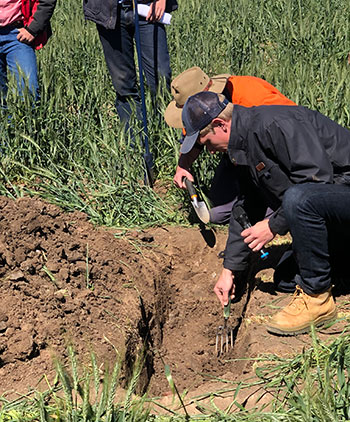Not getting soil management right could be costing some Queensland and New South Wales grain growers more than $1000 per hectare per year in yield losses according to new research.
The figures were released as part of comprehensive data from a five- year Grains Research and Development Corporation (GRDC) investment examining the economics of ameliorating soil constraints in the northern region.
This collaborative project, which involved the University of Southern Queensland, the University of New England, the Queensland Department of Agriculture and Fisheries and the New South Wales Department of Primary Industries, as well as individual soil scientists, has provided the basis for a comprehensive new GRDC manual for dispersive soil management.
 The dispersive soil manual has been dubbed the new 'bible' for Northern grain growers.
The dispersive soil manual has been dubbed the new 'bible' for Northern grain growers.
The new 'bible' for grain growers, agronomists, researchers and farm financial advisers offers practical ways to diagnose soil constraints, develop amelioration plans to manage problems and assess the potential economic costs and benefits.
Dispersive soils are widespread throughout Queensland and NSW, characteristically they become waterlogged when wet, very hard when dry and often have a poor ability to accept and store water.
GRDC sustainable cropping systems manager – north, Dr John Rochecouste says research showed that soil amelioration which resulted in crop yield gains could translate to major improvements in profit for grain growers.
“Gypsum-line applications on highly dispersive soils have been known to deliver crop yield improvements of up to $5500 per hectare over a five-year period, based on 2022 grain prices. So, these are practices that have significant economic benefit,” Dr Rochecouste says.
“I would encourage growers to review the case studies in the manual, relevant to their region. This research has proved that soil amelioration has the potential to remove the yield gap that consistently arises in the case of dispersive soils. For example, we have looked at case studies where gypsum treatments on dispersive soil resulted in $1800/ha to $2300/ha net value profits after five years.
“In most instances, return on investment data also indicated strong short-term gains from gypsum (2.5t/h) and interestingly, small repeated 2.5t/ha gypsum doses gave bigger profits than one dose of 10t/ha gypsum. With high grain prices, the estimated payback period or amelioration was often less than a year.”
 Soil project field days looking at the depth of treatment to manage sodic subsoils. Photo: Jayne Gentry
Soil project field days looking at the depth of treatment to manage sodic subsoils. Photo: Jayne Gentry
Dr Rochecouste says that the manual was compiled so that growers could understand the potential costs and profit associated with dispersive soil treatments.
“Historically, it has been cheaper and simpler to buy more farmland rather than treat moderate to severe dispersive soil issues.
“However, as rural land prices have increased and competition for land increases, there’s definitely greater incentive to consider soil amelioration. We hope that this manual helps growers to weigh up the pros and cons of soil amelioration and results in greater on-farm profitability.
“Thanks to this manual, we have a much better idea of what works and doesn’t work, and the treatment types that give the highest return for growers in Queensland and NSW growing regions,” Dr Rochecouste says.
For more information or to read the Dispersive Soil Manual please visit the GRDC website.

























































